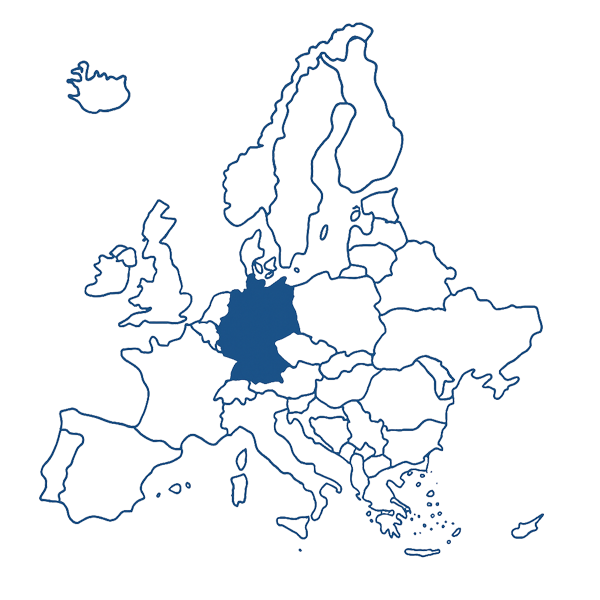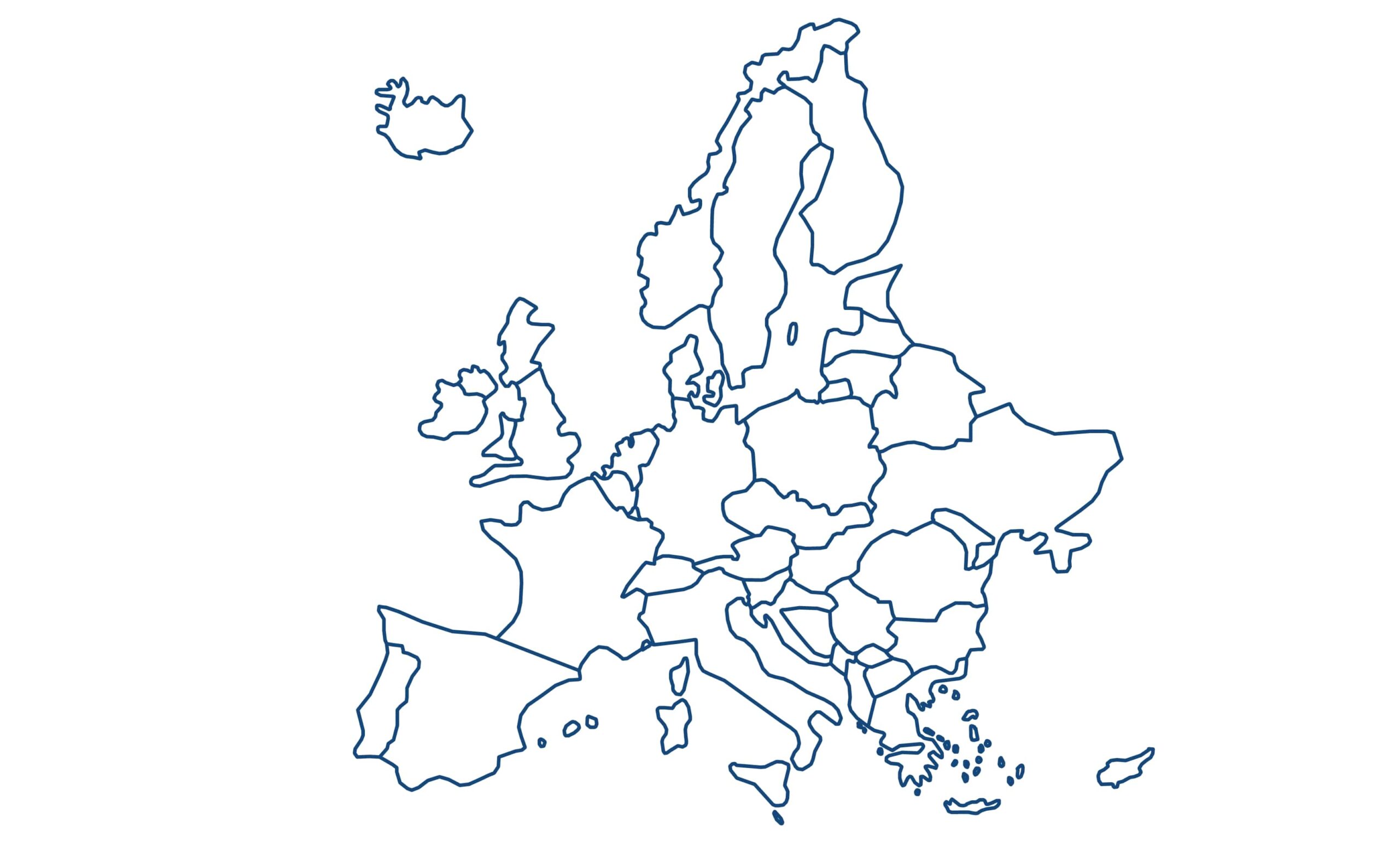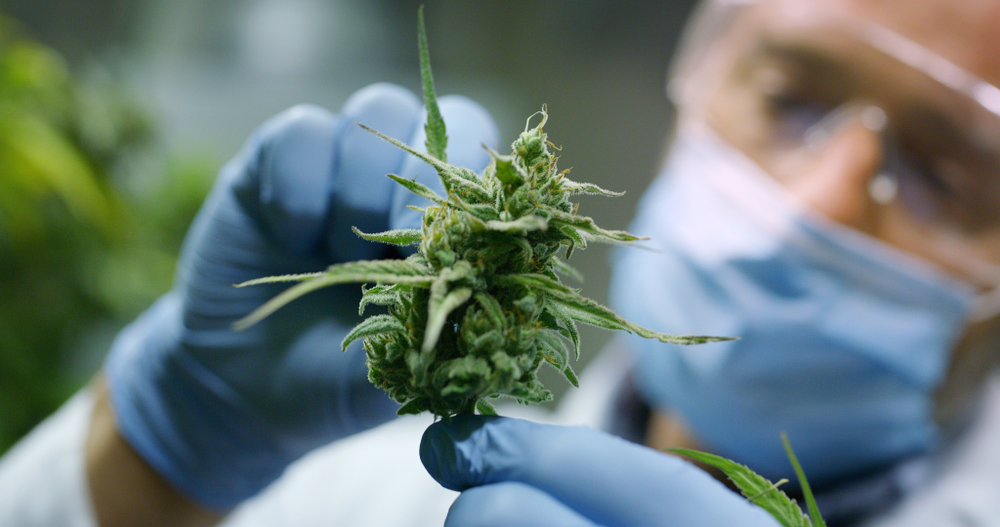GMP Certification for Cannabis:
Standards and Requirements
The EU-GMP certification is a massive asset for cannabis operators. It opens doors to the rapidly growing EU market, allowing for the export of both raw and complete products.
This opportunity is breathing new life into cannabis markets across the globe, particularly those with a focus on exporting, like Canada and Colombia. Countries needing to import cannabis will buy an exporter’s product at a higher price point than in their domestic market.
Germany, in particular, continues to increase its need for cannabis imports as it scales its legal medical cannabis industry. The country currently has only three active domestic operators. While the Cannabis Reform Law passed in April 2024 removed restrictions on the allowed quantity of domestic producers, it will take years before domestic production reaches meaningful volume.
In the meantime, Germany will continue to import the majority of its cannabis. In 2024 alone, the country imported over 72 tonnes of cannabis, representing 96% of cannabis consumed. [1]


The UK, Europe’s other leading cannabis market, intends to continue to import as well. A network of low-cost suppliers from Canada, Colombia, and southern Europe is working to address these supply gaps.
The European Union’s streamlined medical regulations give those cannabis producers, as well as others across the globe, a clear, defined path to leverage these opportunities and export cannabis products to the EU.
Known as the EU Good Manufacturing Practices (GMP), and differing from cGMP in the US and Good Production Practices (GPP) in Canada, these regulations are the strictest in the world, dissecting and reviewing every detail in any operation that manufactures medical or pharmaceutical products and wants to sell them in the EU.
Across the EU, Cannabis is classified as a medical product. Any producer or manufacturer looking to sell cannabis in the EU, whether domestically or by exportation, must be EU-GMP certified. The process to earn this certification is rigorous and takes time, but operators who complete it can leverage the EU market.
This guide breaks down the EU-GMP certification for cannabis, exploring its value, the requirements you must meet to earn your certification, and the most frequently asked questions about securing an EU-GMP certification for cannabis.
Understanding GMP Certification for Cannabis
Good Manufacturing Practices are set rules that help to ensure consumer safety.
In the US, securing a cGMP certification is not a requirement for cannabis producers as the plant remains illegal at the federal level and therefore not regulated by the FDA, the federal regulatory body. It is, however, a requirement for pharmaceutical manufacturers. In the EU, the EU-GMP certification is a requirement for any medicinal product, including an herbal one like cannabis, regardless of where the product was grown and/or manufactured. [2]
Essentially, the certification provides quality assurance for consumers by guaranteeing the processes used to create the product are consistent and meet the strictest safety requirements. This not only helps to protect consumers from potentially hazardous products, but it also helps to protect producers and manufacturers from crises by limiting issues that could arise from consumer use.
The GMP certification process is not new. It applies to everything from the food you eat to the medicines you take.
- Amit Edri, CEO and Co-founder of Portocanna, the first cannabis processor in the EU to secure EU-GMP certification using radio frequency decontamination.
EU-GMP vs. Other Regulatory Standards
The main focus of the EU-GMP certification is the process used to create a product after harvest. To become certified, you must be able to prove that your production process is repeatable and makes the same product each and every time.
US cGMP
Unlike the EU’s approach to GMP certification, which focuses on the Standard Operating Procedures (SOPs) followed to create a product, the United States’ approach to GMP certification focuses on the physical end product. It regulates batch by batch to ensure each final product is safe for consumption.
cGMP certification is not currently required for cannabis producers in the US, but operators must still be compliant with their state’s regulations, which generally test each batch of cannabis for microbial pathogens before sending them out the door.
In the EU, all flower must be sourced from a GACP certified operation. Only then can it “move along the chain” to an EU-GMP facility, which may or may not be under the same operator. For manufacturers that don’t grow their product, they can purchase flower from growers with GACP certification.
Canada GPP
In Canada, every cannabis producer must be compliant with GPP guidelines. These rules are less stringent than EU-GMP. Where an EU-GMP certification guarantees a pharmaceutical-grade product, GPP simply ensures a clean facility and production environment and regular testing for potency and contamination.
A GPP certification does not qualify Canadian producers to export their cannabis to the EU. Producers must upgrade their GPP certification to EU-GMP if they want to sell their products in the EU and UK.
GACP (Good Agricultural and Collection Practices)
GACP is an international framework for the cultivation and collection of medicinal plants. It’s used in many countries across the globe. Some countries, like the US, have adopted their own standards similar to GACP.
GACP focuses on the plant while it’s still in its raw form, regulating the farming, drying, and curing sides of production. For cannabis, it helps to guarantee consistent cannabinoid and terpene profiles across harvests, as well as minimize contamination from pesticides, mold, and heavy metals.
In the EU, all flower must be sourced from a GACP certified operation. Only then can it “move along the chain” to an EU-GMP facility, which may or may not be under the same operator. For manufacturers that don’t grow their product, they can purchase flower from growers with GACP certification.
| EU-GMP | US cGMP | Canada GPP | GACP | |
|---|---|---|---|---|
| Scope | Pharmaceutical- grade safety and production | Pharmaceutical- grade safety and production | Basic safety and production | Basic safety and cleanliness pre-production (ensures quality of raw material) |
| Regulatory Authority | European Medicines Agency (EMA) + national-level regulators | Food and Drug Administration (FDA) | Health Canada | Country dependent |
| Testing Requirements | Extensive process and batch testing, stability studies, validation | Extensive batch testing, stability studies, validation | Basic potency and contaminant testing | Basic contaminant testing |
GMP Certification for Cannabis: Process and Timeline

The main focus of the EU-GMP certification is the process used to create a product after harvest. To become certified, you must be able to prove that your production process is repeatable and makes the same product each and every time.
The timeline of securing an EU-GMP certification for cannabis depends on a few factors, including how long it will take you to collect base-level data so you know what you’re working with, how backed up the local regulatory authority is, how many issues that regulatory authority finds during their visit(s), and how long it takes you to correct those issues.
There are a few ways you can ensure a quicker timeline:
- Only certify specific areas of your production. The EU-GMP certification can be incredibly specific and only cover a specific area or a specific process of your business. If you grow more than just cannabis or produce products not intended to be sold in the EU, you can leave those portions of your business out of the EU-GMP certification process.
- Use equipment already used in other EU-GMP certified operations. If you start with equipment that is already used in other EU-GMP certified operations, it will increase your chances of moving through the process quickly, as the machinery is already familiar to the regulators. This does not mean the machine will immediately pass inspection in your operation, but it at least gives you a head start.
- Pay attention to the details. Meaning, don’t make avoidable mistakes. Many businesses fail or are set back simply because they did not complete the paperwork properly or missed simple requirements like including a “wash hands” sign above a wash station.
- Hire experienced staff or consultants. Relationships matter when dealing with regulators, who may get frustrated with rookies. Working with people experienced in the process can make the certification process smoother and quicker.
The EU-GMP certification is about quality control, not quality validation. When you qualify a GMP process, you’re telling the regulators that this process will produce the same exact product one hundred percent of the time.
- Edri
The process to secure EU-GMP certification for cannabis facilities can be broken down into five phases; however, it’s recommended to also include a consultation with your local regulatory authority at the very beginning to understand exactly what you can expect during the certification process.
Inviting the regulators in early and maintaining contact with them throughout the process can greatly improve your chances of passing inspection, as can partnering with a consultant who has an established working relationship with regulators and can guide you through the process.
-
Phase 1
-
Phase 2
-
Phase 3
-
Phase 4
-
Phase 5
Phase 1: Gap Analysis
To start, you must review your current facility design and SOPs to determine what is already EU-GMP compliant and what needs to be changed, updated, added, or removed.
In this phase, you will also establish your Corrective and Preventive Actions (CAPA) plan to address these areas.
Phase 2: Facility Upgrades & Quality Management System (QMS) Implementation
Depending on what was discovered during phase one, you may have some facility changes to make. This could include modifying your HVAC system, material flow controls, and/or facility and equipment setup.
This phase will also implement Good Documentation Practices (GDP) and upgraded SOPs. Within these changes, your employees will be trained in EU-GMP requirements so they understand their roles and responsibilities.
Phase 3: Validation and Qualification of Equipment and Methods
Phase three can be time-consuming as it reviews every piece of equipment involved in the production process. Each piece of equipment goes through its own six-phase validation:
- Design Qualification (DQ)
- Factory Acceptance Test (FAT)
- Site Acceptance Test (SAT)
- Installation Qualification (IQ)
- Operational Qualification (OQ)
- Performance Qualification (PQ)
The machine meeting these requirements is your responsibility, not the responsibility of the machine’s manufacturer. The manufacturer is only involved in the DQ phase. DQ reviews the function of the design of the machine, what it has to do, the materials used, etc., as well as its software and hardware design specifications. All of this documentation must come from the machine’s manufacturer. This is why it’s helpful to start with equipment already in use in EU-GMP certified operations.
After the DQ phase, the rest is on you.
Phase three will also review your methods for things like cleaning, analytical testing, and batch testing.
Phase 4: EU-GMP Inspection and Audit
After phase three is complete, it’s time to submit for an official inspection from your local regulatory authority. It’s suggested to first have a pre-inspection review from a consultant or regulator to confirm you have everything in order, but it’s not required.
During this phase, a representative from your local regulatory authority will complete the first official EU-GMP audit. This takes place on-site and reviews everything from phases one through three.
Once the audit is complete, you will receive a list of issues divided into three categories: critical, major, and minor. You have 30 days to address these issues and resubmit for inspection. From there, the regulators have 30 days to respond to you.
Phase 5: EU-GMP Certification and Ongoing Compliance
With everything complete and approved, phase five is when you receive your EU-GMP certification and are listed in the official EudraGMDP database.
However, the EU-GMP certification process never truly ends, as there are regular audits to ensure you’re still in compliance. Additionally, if anything about your facility, SOPs, or production process changes, you will have to resubmit for approval.
GMP Certification for Cannabis FAQs
How long does it take to secure an EU-GMP certification for cannabis?
The timeline to secure an EU-GMP certification varies depending on a few factors. You will need to factor in the amount of time it will take to secure your baseline data (i.e., run your gap analysis) to determine where you need to start. From there, the timeline can be impacted by how backed up your regulatory authority is and how much you need to change within your existing operation.
Ultimately, earning an EU-GMP certification for cannabis generally takes anywhere from a few months to a couple of years. It must then be constantly maintained from there.
What is the difference between GMP and GPP?
GMP stands for Good Manufacturing Practices. GPP stands for Good Production Practices. GMP is generally known to be stricter as it regulates pharmaceutical-grade products. GPP is a more basic structure addressing general safety and cleanliness requirements.
GPP is a requirement for cannabis manufacturers in Canada. EU-GMP is a requirement for cannabis manufacturers in the EU. US cGMP is not a requirement for cannabis manufacturers in the United States.
Is GMP certification mandatory for cannabis producers?
In the US, a cGMP certification is not a requirement for cannabis producers because cannabis is still illegal at the federal level. In the EU, an EU-GMP certification is required for all cannabis producers and manufacturers as it’s considered to be a medicinal product, and any medicinal or pharmaceutical product sold in the EU must be EU-GMP certified.
What are the global GMP standards for cannabis?
There are no global GMP standards for cannabis in place at this time; however, producers looking to export their product(s) to the EU must be EU-GMP certified.
